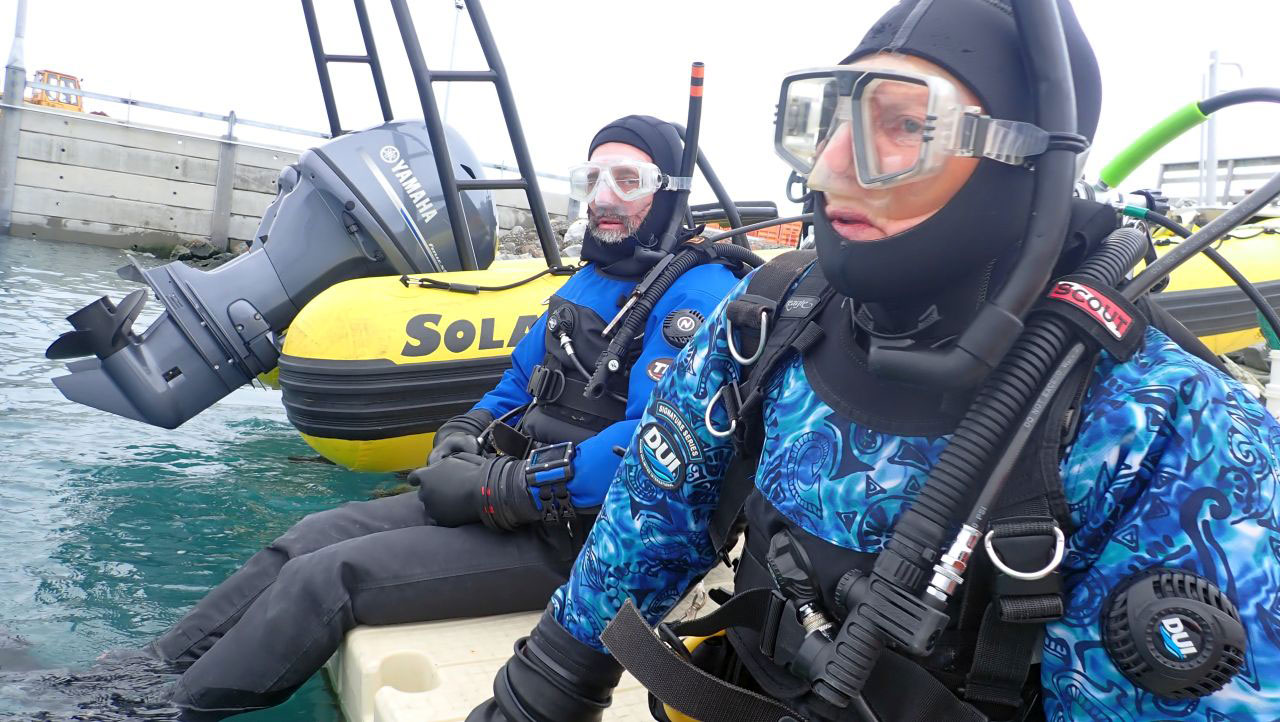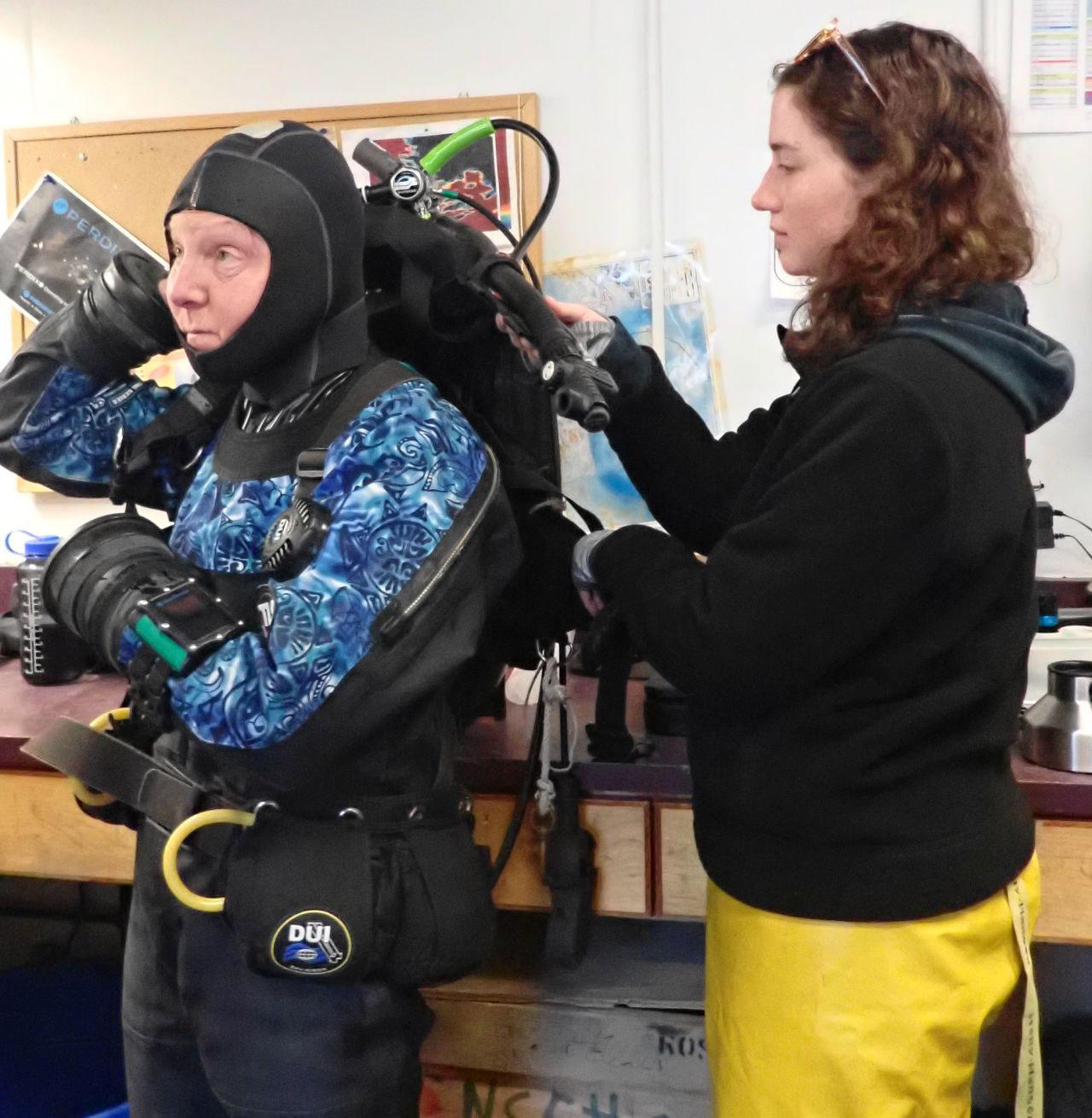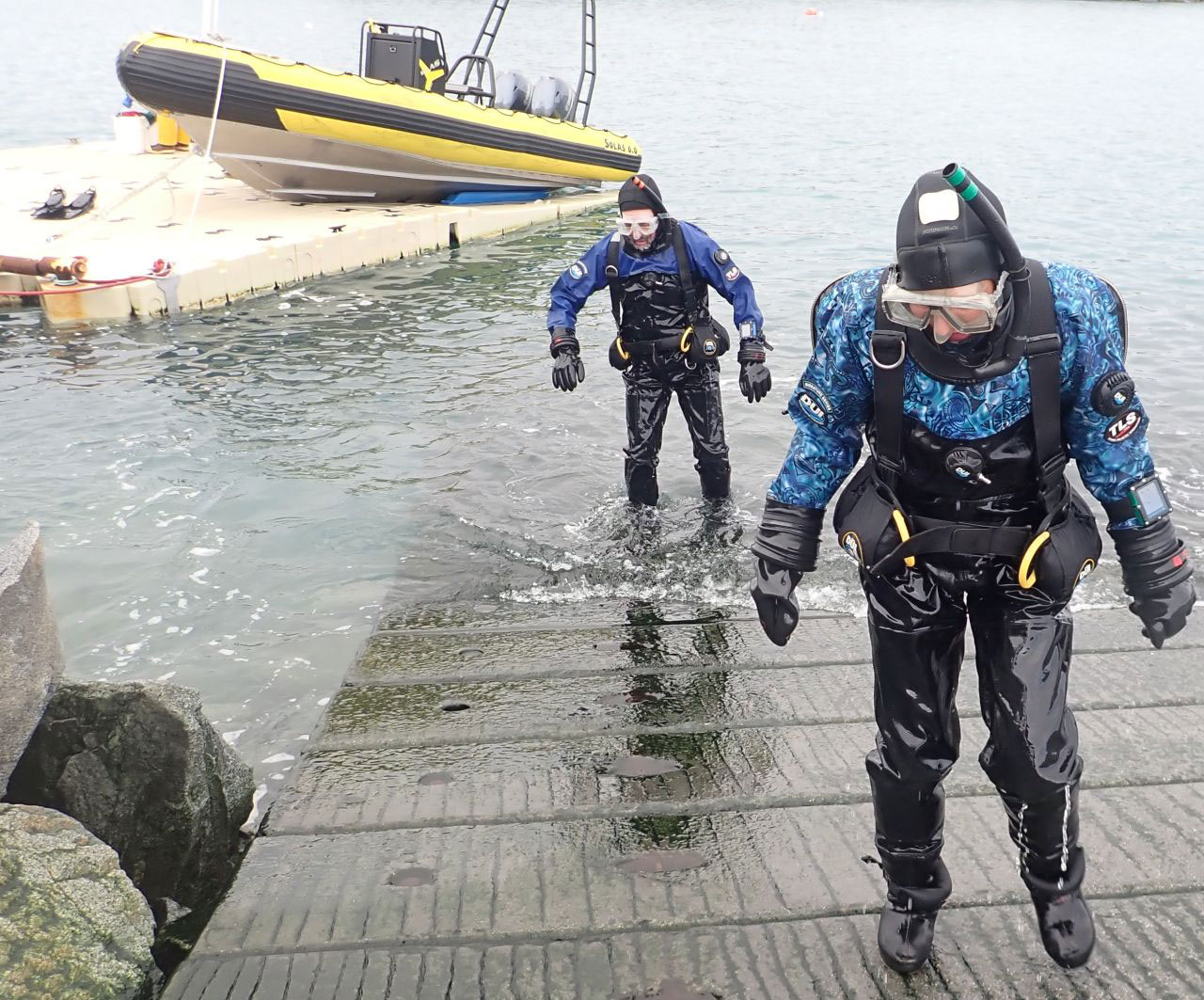
In my last post, I talked about how unusually bad weather for January had been limiting our diving activities. I also mentioned being able to dive right off the station dock sometimes when the winds are too strong to go out in boats but from a direction where the dock area is protected from the waves. The weather has gotten better, but we have been diving at the dock a lot anyway. Why you might ask??
In her last post, Hannah talked about how we get amphipods for our main ocean acidification experiment by collecting the seaweeds (macroalgae) that they live on. We get thousands of amphipods from each individual alga. Often over ten thousand, particularly from the larger individuals. However, most are not the species we want to focus on for the experiment, and as Hannah explained, we need a couple thousand or more of each of those.
One of the species Hannah introduced you to that we’ll be using, and one that in many ways we want the most, is Djerboa furcipes. In the photo at the top of Hannah’s last post it is the mostly translucent one with what looks like a dark stripe down the center (which is its gut filled with food). We just call it Djerboa, which might seem to be a funny looking name. It’s pronounced pretty much exactly like you might guess from how it is spelled. However, not usually having it spelled out in front of me, it took me a week or more to get so that I pronounced it correctly every time we talked about it. Maggie, Hannah, and Addie would giggle or at least smile at my various attempts.
The other two species we will be using are pretty common. Usually not the most abundant amphipod species, but we knew from all our past work here that we’d find plenty. Not so with Djerboa, which in past years has sometimes been moderately common but in others, uncommon. This year, unfortunately it has been fairly uncommon at most of the places we’ve been diving. When we were able to start getting out in boats more regularly, we went to different sites each day to see if we could find where it was most abundant (or, least uncommon anyway). Turns out, one of the two best places we’ve found for it is not directly off the dock, but just a short swim from the dock. So even on days when we could have gone out boating, instead we’ve been diving from the dock.
Any time one goes off station, you sign out on a blackboard. If there is a fire or similar emergency on station, everyone gathers (“musters”) at one of two predetermined spots to make sure all are accounted for. Being signed out on the board would let the fire team know you are accounted for, and not trapped in the burning building. The divers are, technically, off station during a dive from the dock. The two dive tenders (helpers) are not, but need to stay at their jobs preparing to help the divers when the dive is over, even if there is an emergency. When we go out in a boat to dive, we sign out on the board individually but with a group name of ‘divers.’ When diving from the dock, we change that to ‘dock divers’ and refer to the whole process as dock diving.
The dock diving process is faster overall than going out in a boat. We will probably have a future post about the process of getting a Zodiac boat ready to go out. We’ll definitely have a future post about the process of getting ready to dive and diving from a Zodiac. Dock diving is physically more demanding on the divers. When we dive from a boat, we put our weight belt and tank/regulator/buoyancy-compensator rig on in the boat, right before we get in the water. Combined, for me they weigh a bit over 100 lbs (just a bit under that for Maggie and Hannah who need less lead weight in their belts). For dock diving, we put all that on in the dive locker and walk with them to the stairs and ramp that go down to the station’s floating dock. Below is a photo of Addie helping Maggie into her gear in the dive locker. The photo at the top is of Maggie and me sitting on the edge of the floating dock, right before starting a dock dive.

Once we are in the water, a dock dive is pretty much like a boat dive until the end. On a boat dive, we come to the surface and the boat, which has been following our bubbles, comes over to where we are and picks us up. The floating dock can’t do that, so we need to find our way back to it. Maggie and I have made so many dives right off the station in the past that we can find our way back, usually right to the dock but at least fairly close.
When we get back to the dock, we hand the tenders our collecting bags which they put in buckets of water to carry up to the aquarium. Then we take off our tanks and help the tenders pull them up onto the dock. Free of the tank, but still wearing our weights, we swim around the dock, take off our fins, and get out by walking up the boat ramp. That’s what you see in the photo below. For this dive, we handed our fins to the tenders (you can see mine on the dock where Addie was within reach of the ramp; Maggie handed hers to Hannah, who took the photo). The ramp has small algae growing on it, which makes it quite slick. That’s why Maggie and I are watching our steps very carefully.

Now you know about dock diving. In an upcoming post, we’ll talk about how it is all done from the Zodiac. Our dock and other diving has us very close to having enough Djerboa to start the experiment, which you will definitely be reading about soon.